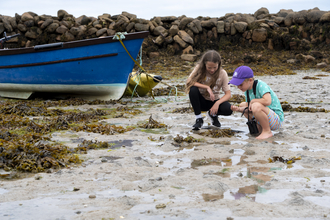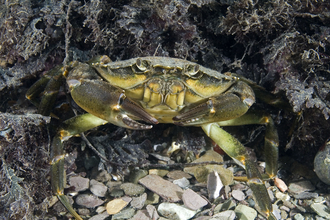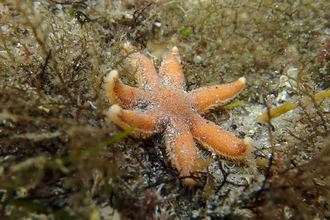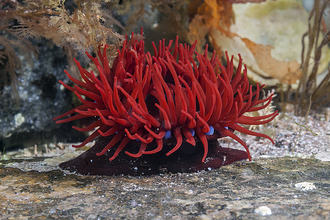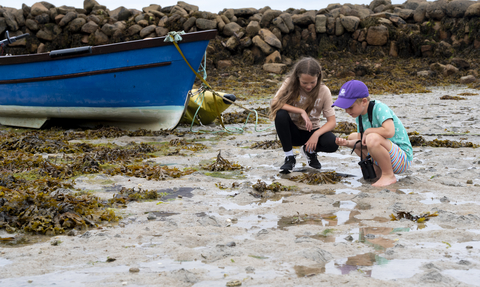
How to go rockpooling on Scilly
Explore Scilly's amazing rockpools
Rockpooling is a fantastic way to experience wildlife on Scilly and requires very little equipment. Our sandy beaches are brimming with rare and unusual species, often hiding in plain sight right under our noses, nestled under rocks and inside dense jungles of seaweed.
The best time of year to go rockpooling is late spring to early autumn, when the weather is milder and low tides more frequent. Knowing where to look is key if there is a particular species you are searching for, such as the enigmatic conger eel or the striking seven-armed starfish. The receding tide allows us to catch a glimpse into the mysterious and fascinating world of the ocean, so big spring tides (where the water recedes a long way) are a great opportunity to experience ocean wildlife. On Scilly, most beaches have shallow, rocky areas where wildlife can be found. Good spots on St Mary’s are Porthcressa and Old Town Bay, as well as St Martin's Flats, Beady Pool on St Agnes and Rushy Bay, Bryher.
Keeping safe when rockpooling is extremely important. Consider the tide and always remain vigilant to prevent being cut off from land. Wear appropriate and grippy shoes that you don’t mind getting wet for scrambling over slippery rocks. Also be wary around cliffs as some areas of Scilly are vulnerable to erosion, especially in wet weather. Company is always advisable.
Many species possess defence mechanisms so be wary of stinging tentacles, claws, and teeth. When handling crabs be cautious of their pinchers – they hurt!
You don’t need any specialist equipment for rockpooling, but it can be useful to bring along a bucket, a camera, and something clear like a glass jar for closer viewing. Nets can damage the rockpools and their inhabitants. When possible, watch the wildlife in its natural environment - you can learn a lot from simple observation. When moving wildlife from the seashore it’s important to adhere to rockpool etiquette: always return sea creatures to where you found them as soon as possible and restore their habitat by putting back any rocks you moved or turned over very gently. Some species, such as the giant goby, are extremely rare and disturbing them counts as a criminal offence.
Some of the top species found on Scilly’s shores include colourful sea anemones, sea slugs, hermit crabs, sponges, cowries, starfish, prawns, conger eels, gobies, urchins, and sea snails. Some of the more spectacular seashore species discovered on Scilly include the candy-striped flatworm and the brightly coloured nudibranchs, often casually referred to as sea slugs.
Find out more
Find out more about Scilly's rockpools and their inhabitants, and how to carry out rockpooling responsibly.

